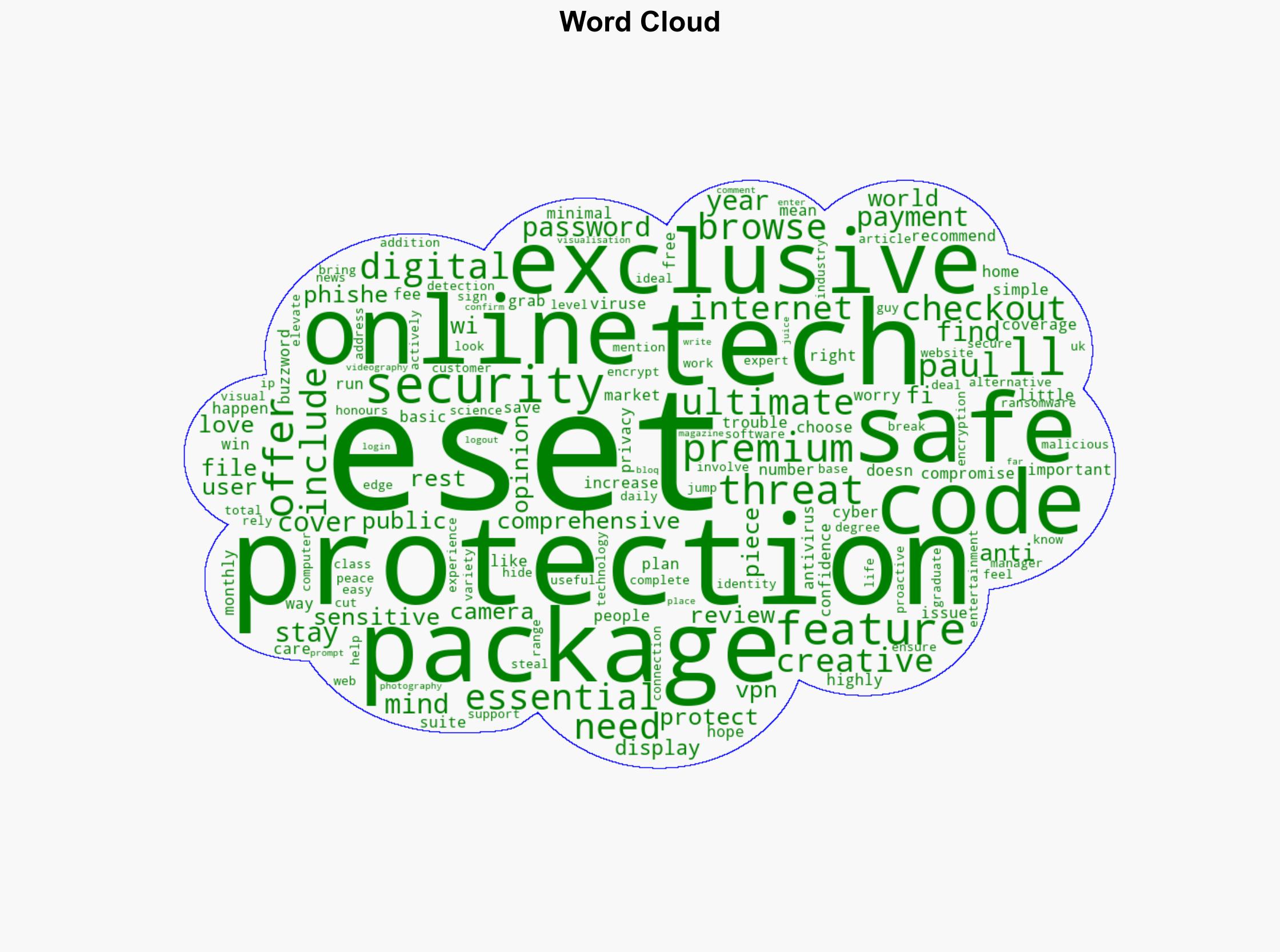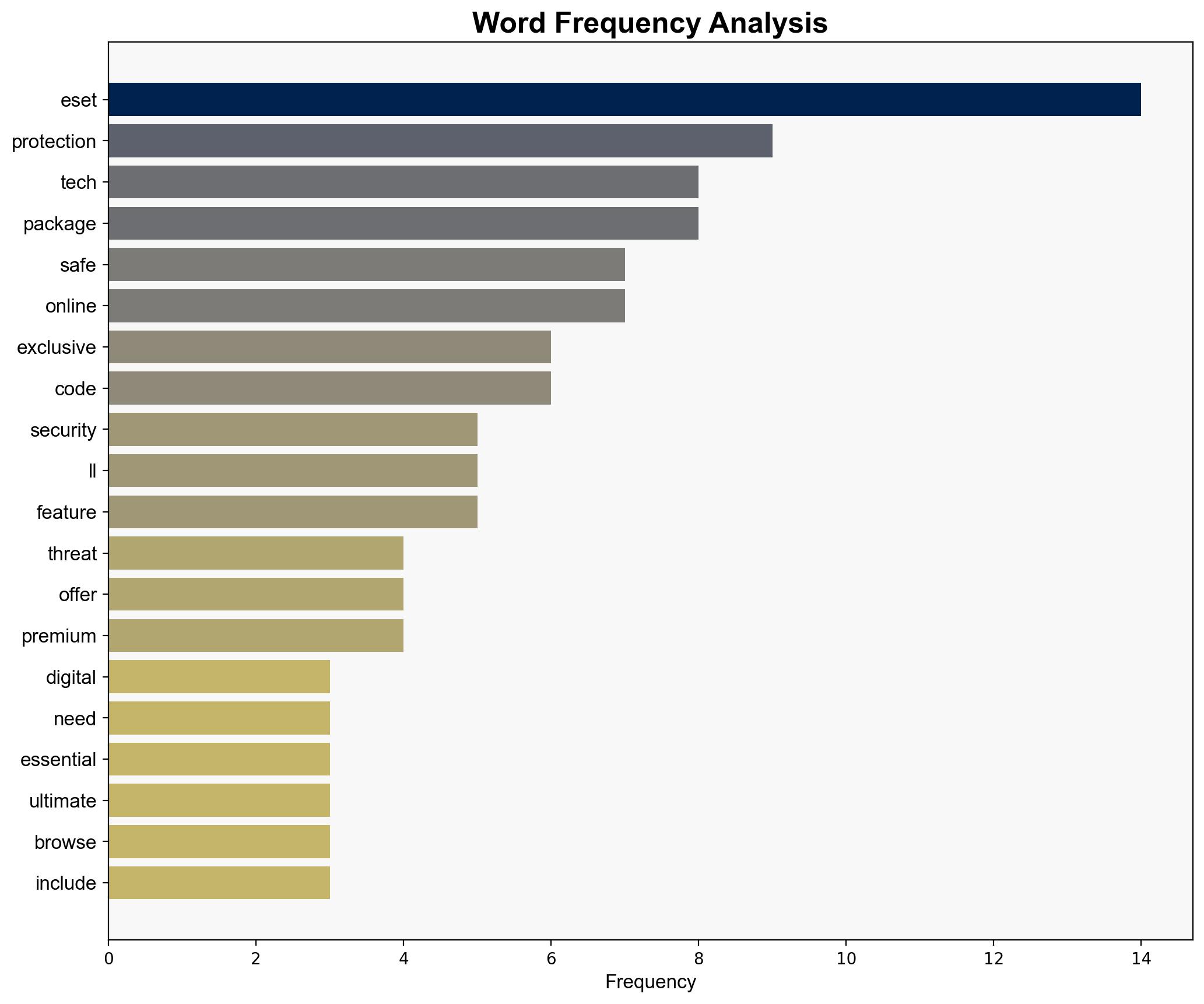Stay safe online with 30 off at ESET with our exclusive code – TechRadar
Published on: 2025-10-31
Intelligence Report: Stay safe online with 30 off at ESET with our exclusive code – TechRadar
1. BLUF (Bottom Line Up Front)
The most supported hypothesis is that the promotion of ESET’s cybersecurity products is primarily a marketing strategy aimed at increasing market share by leveraging current concerns about online security. Confidence level: Moderate. It is recommended to monitor the effectiveness of such promotions in influencing consumer behavior and consider potential cybersecurity implications if the promotion inadvertently attracts malicious actors.
2. Competing Hypotheses
1. **Hypothesis A**: The promotion is a strategic marketing effort by ESET to capitalize on heightened public awareness and concern about cybersecurity threats, thereby increasing its market penetration.
2. **Hypothesis B**: The promotion is a response to a specific increase in cybersecurity threats, possibly indicating a reactive measure to a recent or anticipated surge in cyberattacks.
Using the Analysis of Competing Hypotheses (ACH) 2.0, Hypothesis A is better supported due to the general tone and content of the source, which emphasizes product features and consumer benefits rather than specific threat responses.
3. Key Assumptions and Red Flags
– **Assumptions**: Hypothesis A assumes that the primary goal is market expansion rather than an immediate response to a threat. Hypothesis B assumes a direct correlation between the promotion and a specific threat landscape.
– **Red Flags**: Lack of specific threat data or recent cybersecurity incidents in the source text that would support Hypothesis B.
– **Blind Spots**: The source does not provide data on recent cyber incidents or trends that could validate Hypothesis B.
4. Implications and Strategic Risks
– **Economic**: Successful marketing could increase ESET’s market share, impacting competitors.
– **Cyber**: If the promotion attracts attention from malicious actors, it could lead to targeted attacks against ESET users.
– **Psychological**: Increased consumer awareness and anxiety about cybersecurity threats could drive demand for security products.
5. Recommendations and Outlook
- Monitor consumer response to the promotion to assess its impact on market dynamics.
- Evaluate the cybersecurity landscape for any emerging threats that could validate Hypothesis B.
- Scenario Projections:
- Best Case: Increased market share for ESET with no significant increase in cyber threats.
- Worst Case: Promotion attracts malicious actors, leading to increased cyberattacks on ESET users.
- Most Likely: Moderate increase in market share with no significant change in threat landscape.
6. Key Individuals and Entities
Paul, a digital expert with a background in computer science, is mentioned as a contributor to the source text, indicating a potential influence on the narrative presented.
7. Thematic Tags
national security threats, cybersecurity, consumer behavior, market strategy





